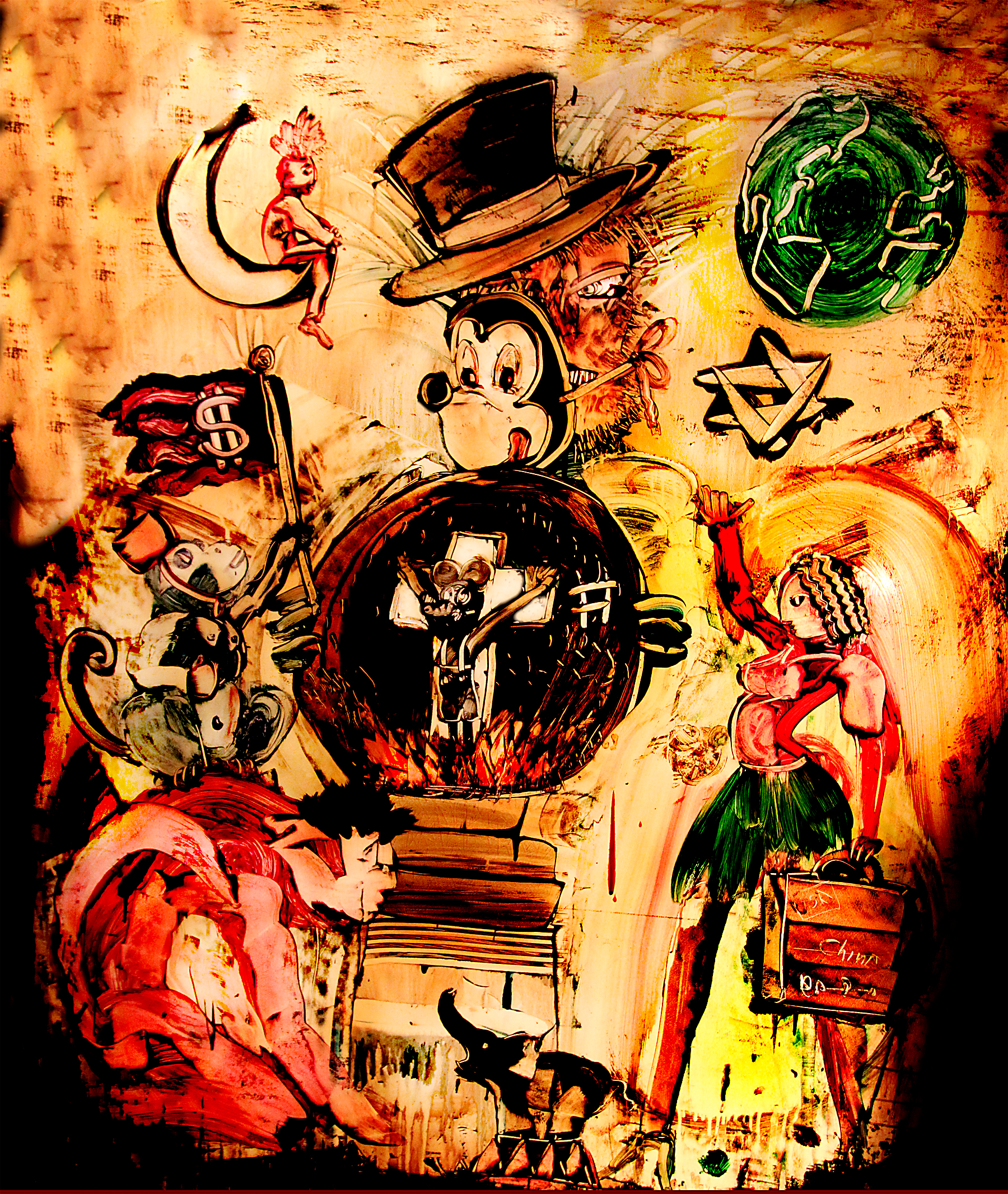A barrage of horns, a xylophone, a string base, organ pipes, a bass drum, 33 cowbells ““ and just one man to play them all.
Llyn Foulkes will man this all-in-one musical beast he calls “the Machine” tonight at the UCLA Hammer Museum while performance artist Norton Wisdom’s paintbrush animates.
The show is the centerpiece of Hammer Bash!, the closing party for the “Nine Lives” exhibition in which Foulkes’ paintings are featured alongside those of eight other L.A. artists.
“Nine Lives: Visionary Artists from L.A.” features artists with widely varied approaches, including Lisa Anne Auerbach’s sweater ensembles embroidered with political commentary, Hirsch Perlman’s 9-foot photographs of cats, and Foulkes’ socially provocative relief constructions.
One such construction is “Deliverance,” which depicts Foulkes immediately after he has shot and killed Mickey Mouse. Another work, “The Awakening,” is a strikingly intimate portrayal of the artist and his wife that was painted over the course of their breakup in the ’90s.
Perhaps the grandest work is an 8-foot-tall piece called “The Lost Frontier,” which is set in Los Angeles.
Foulkes spent nearly a decade sculpting nooks and building layer upon layer of paint, adding real artifacts like human hair and a dead cat. The result is a stunning dreamscape housed in a sort of diorama that appears much deeper than its 8 inches.
Foulkes first gained notoriety for his paintings in the 1960s, and while most of his fame can be attributed to his art, he has also been a musician for many of his 74 years. He started a group called The Rubber Band in 1973, but by the late ’70s, he was ready to shift gears.
“I gave up rock music because it got to be all about who could be the loudest,” Foulkes said. “So I decided to get back to my roots.”
In 1980, he started his one-man band and began building the Machine, which has been evolving ever since. The instruments are mounted so that the Machine wraps around Foulkes in a semicircle; it took him years to learn how to play them all at once.
He said one of the hardest things to master was the string bass, which he added in 1987 and plays with his feet. He also plays the organ pipes with his heels.
The music Foulkes makes now has many different influences, particularly what he listened to while growing up. Some songs are whimsical, with circus-like bells and horns, and some more honky-tonk. Others are more contemporary.
“It’s very eclectic, sometimes it’s old jazz, sometimes country-western, at times more big-band, sometimes very danceable,” he said.
Like his paintings, Foulkes’ lyrics often include social and political commentary. He is especially concerned with Los Angeles: “How I’d love to meet that so-and-so who let this old town go,” Foulkes croons in the song “Old L.A.”
Tonight, Foulkes will be accompanied by Wisdom, another L.A. artist, who will create art as Foulkes performs.
Wisdom illuminates 8-foot sheets of translucent plastic from behind to create the look of stained glass. He uses brushes, his fingers and a squeegee to move water-based paints across the plastic, continually swirling and wiping away paint to form new images as the music shifts.
“I’m another instrument in the musical pantheon ““ only thing is, I use color and form and line,” Wisdom said of painting onstage with live bands.
He has performed with a diverse list of musicians, including Beck, Flea of the Red Hot Chili Peppers, Robby Krieger of The Doors, The Grateful Dead, and Banyan with drummer Stephen Perkins of Jane’s Addiction and guitarist Nels Cline of Wilco. He has also performed with renowned experimental organist and UCLA Professor Christoph Bull, whom he said he finds especially fun.
“He reinterprets Bach spontaneously. He’s sort of a bad boy of the classical pipe organ,” Wisdom said.
“I call (Foulkes’) Machine a giant train wreck,” Wisdom said. “Strange pipes and tubes and bells ““ it looks like a locomotive that’s run into a civilization … (but) unlike most musicians, he is really focused on the audience.
“He’s got this human aspect to his music and his performance; there’s nothing like it. I always have my back to the audience, so I get to see the audience through his music.”
The two have collaborated often at the Church of Art, Foulkes’ studio and performance space in downtown Los Angeles. Their performance at the Hammer is the next logical step.
“Ten paintings will be morphed and destroyed over and over again,” Wisdom said. “There will be nothing left at the end; it lives for the moment.”
